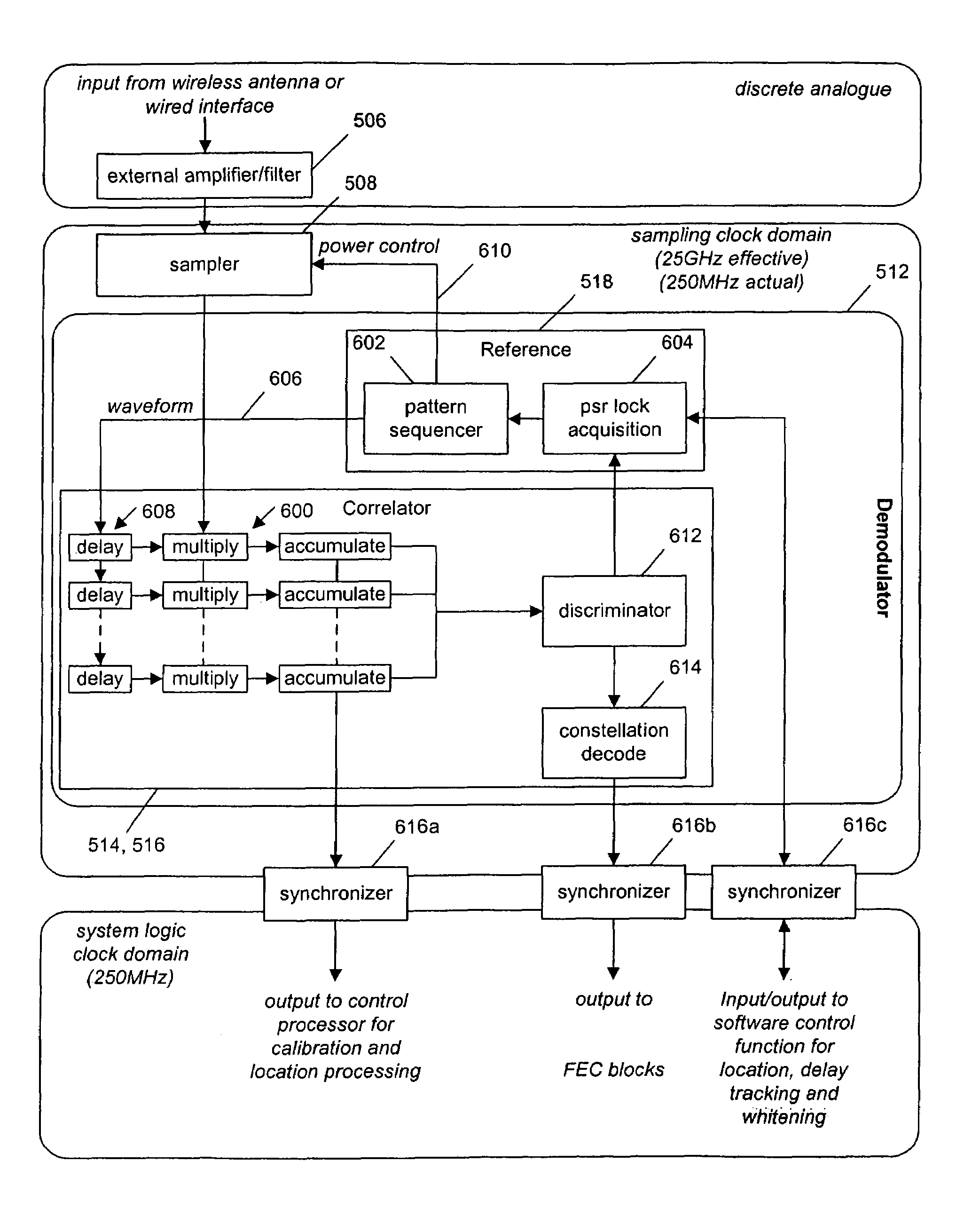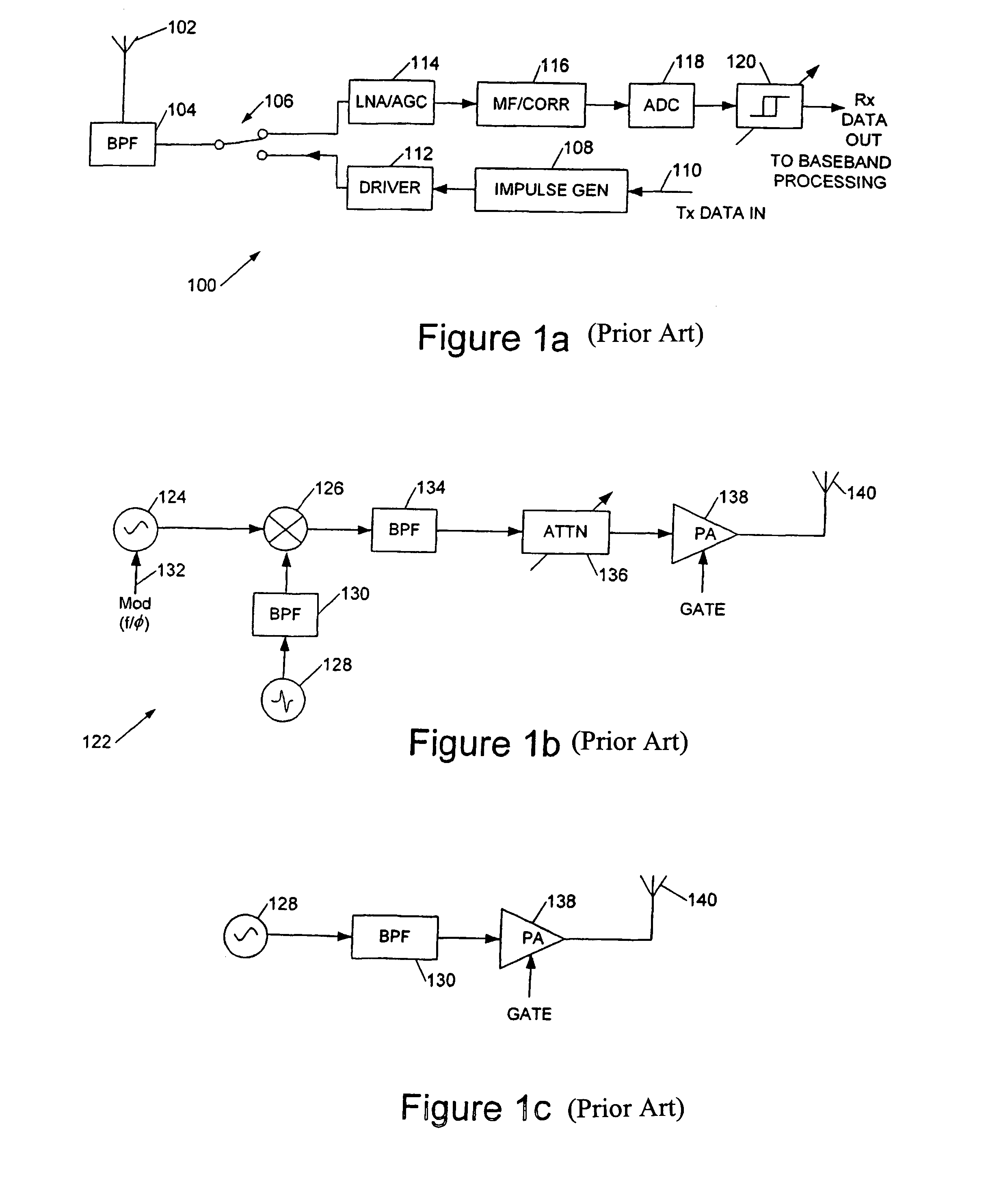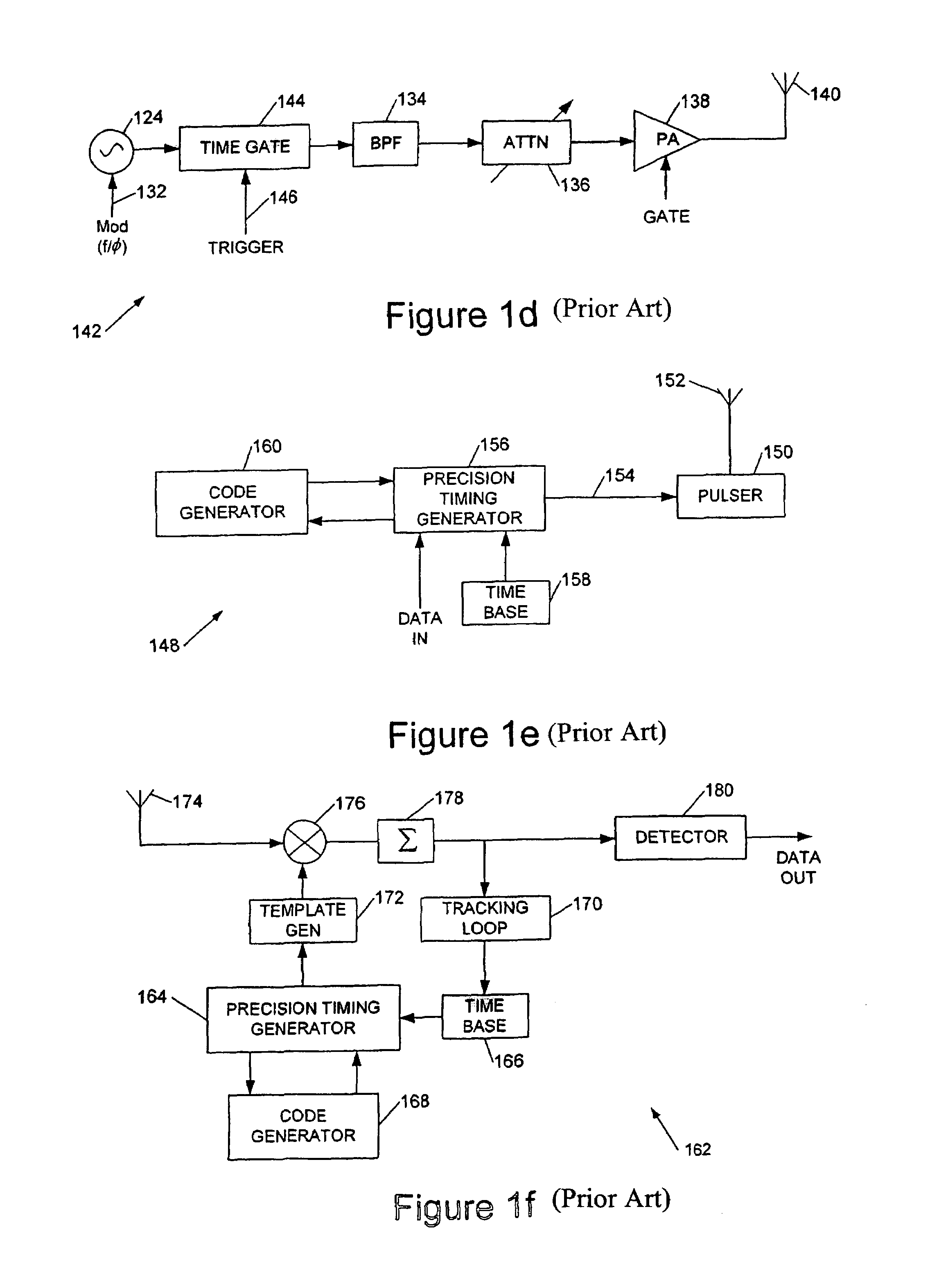Communications systems and methods
a communication system and receiver technology, applied in the field of uwb data communication apparatus and methods, can solve the problems of low transmit power output, uwb communications also present a number of specialities, and the uwb communications system is relatively unsusceptible to multipath effects, so as to facilitate receiver training and facilitate the effect of precise position location
- Summary
- Abstract
- Description
- Claims
- Application Information
AI Technical Summary
Benefits of technology
Problems solved by technology
Method used
Image
Examples
Embodiment Construction
[0061]As previously mentioned a transmission medium coupling a UWB transmitter and UWB receiver will typically give rise to a number of physical effects that complicate the function of the receiver. The transmission medium may comprise a wireless or wired transmission channel. The physical effects include multiple path reflections, which result in multiple pulses at the receiver or each transmitted pulse, in some cases these pulses being phase inverted. Dispersion, frequency dependent continuation and other properties of the transmission medium distort the pulse shape. Interference and noise sources are received in addition to the desired pulse data. Noise sources include thermal noise (from the receiver itself), narrow band interference from radio transmitters sharing the same frequency spectrum, and broadband interference (from switching and alike). There may also be interference from co-located UWB systems sharing the same physical space for electrical cabling. A UWB receiver sho...
PUM
 Login to View More
Login to View More Abstract
Description
Claims
Application Information
 Login to View More
Login to View More - R&D
- Intellectual Property
- Life Sciences
- Materials
- Tech Scout
- Unparalleled Data Quality
- Higher Quality Content
- 60% Fewer Hallucinations
Browse by: Latest US Patents, China's latest patents, Technical Efficacy Thesaurus, Application Domain, Technology Topic, Popular Technical Reports.
© 2025 PatSnap. All rights reserved.Legal|Privacy policy|Modern Slavery Act Transparency Statement|Sitemap|About US| Contact US: help@patsnap.com



